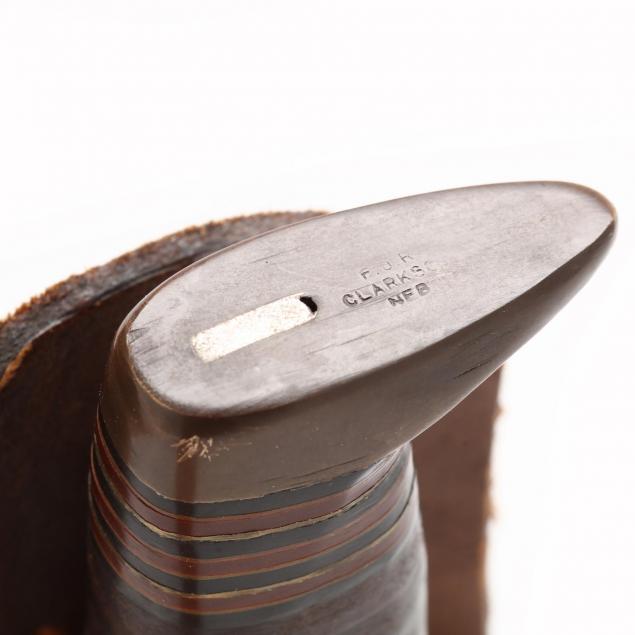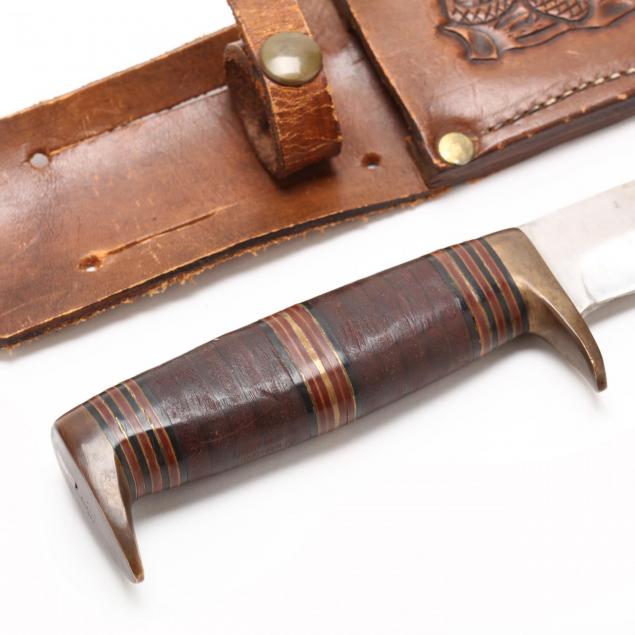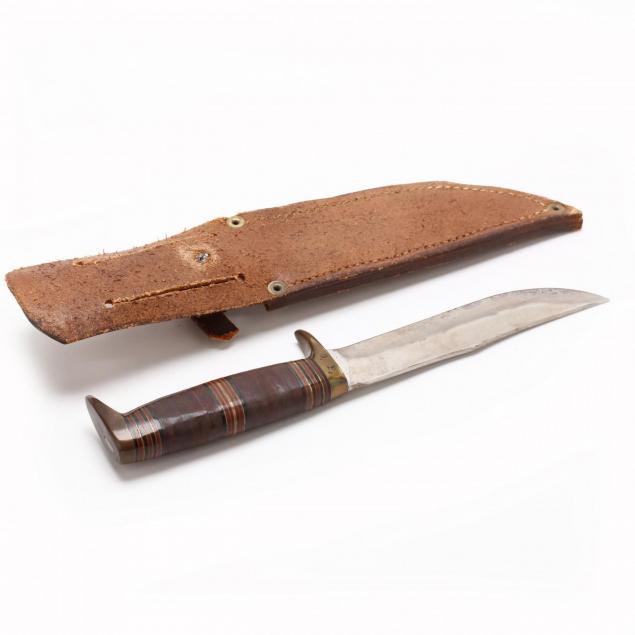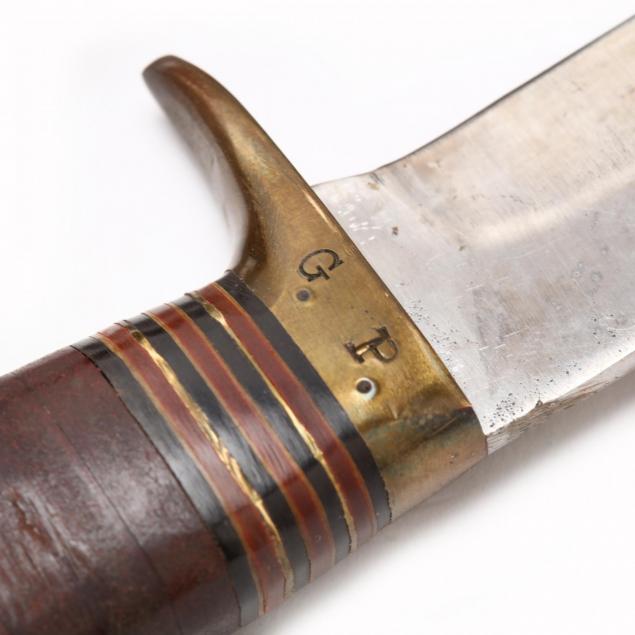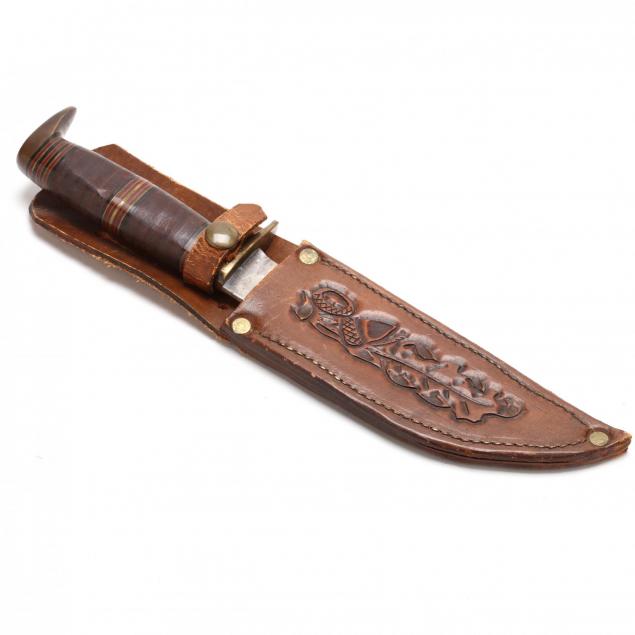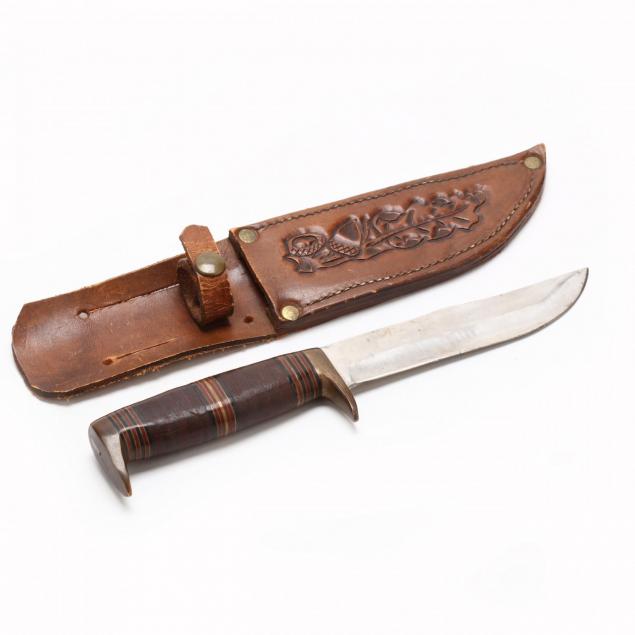
Lot 372
Vintage Frank Richtig Clipped Point Hunting Knife
Explore more items like this one.
Visit our Historical Department Historical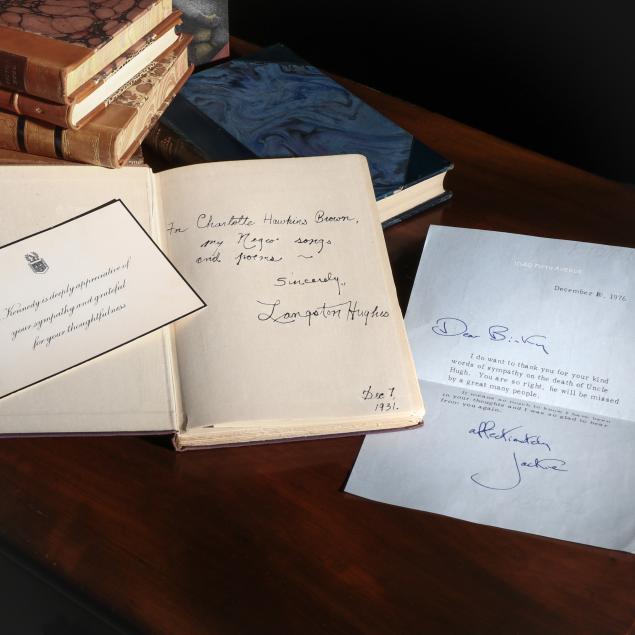
Lot Details & Additional Photographs
Private Collection, Raleigh, NC
Frank Joseph Richtig (1887-1977) of Clarkson, Nebraska started out as a small town blacksmith only to end up a world-renowned maker of legendary steel knives. Richtig developed a secret tempering process to produce blades that were hard enough to cut through conventional steel bars. This amazing technical accomplishment was highly publicized nationally in 1936 via Ripley's Believe It or Not. A few years later Richtig's knives were often given to local soldiers heading off to WWII while military luminaries such as Eisenhower, Nimitz and MacArthur also received gifts of Richtig's handiwork.
The following statement, written by the consignor, outlines the origin of the Richtig knives being offered: "I had the pleasure of getting to know Frank Richtig in 1970 when he was over 80 years of age, a few years before his death. I was completing my doctorate at Nebraska Medical School in Omaha and one of my best friends was Tony Dusatko who knew Frank very well because they were both from the small Nebraska town of Clarkson. Tony and I often spent many weekends pheasant hunting around Clarkson. On one of our trips, we went to Frank's blacksmith shop to watch him make knives and read articles about him and his famous knives in Ripley’s Believe It or Not. He agreed to custom-make several of his hunting knives with leather handles even though he had retired from his business. I have kept them until 2017 when I finally decided to sell them I gave the third one to my brother. Frank was a wonderful man with a lot of energy even at his age. One vivid memory was of the day that I picked up the knives. He waited until that day to stamp the knife with his trademark and demonstrate how the knife could cut through a railroad tie and still cut a piece of paper with ease. However, his hands were so shaky that he missed with the hammer on both the back of the blade and in imprinting his trademark. The result is somewhat of a “half trademark” and a small mark on the back on one of the blades. For a long time, I was disappointed that they were “imperfect" but I grew to appreciate them even more because they were unique and personal. I hope whomever has them know enjoys them as much as I have. Dr. Robert Keefer, Raleigh, NC. February, 2017."
Toned brass; insignificant crazing to the leather grip; wear and hairlines from sharpening to the blade.
$1,000 - 2,000
